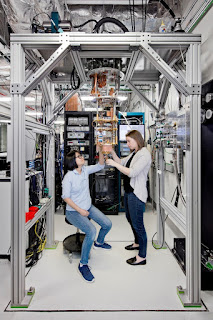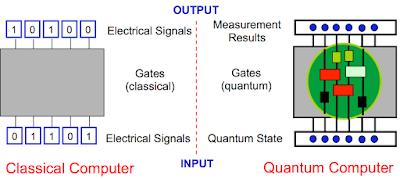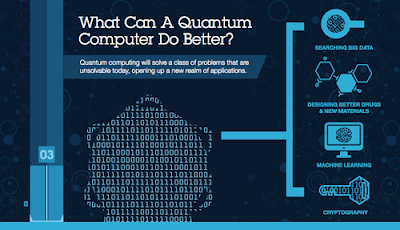Twitter Feed
Packing My Bags For Prague and Dimension Data #Perspectives2015
Prague is a beautiful city! My last time was in June 2010 when Jeremy Geelan invited me to speak at CloudExpo Europe (see my blog post and video from that…
SAP/HANA Does Big Data for National Security
Carmen Krueger, SAP NS2 SVP & GM While SAP is globally renowned as a provider of enterprise management software, the name is hardly ever associated with the spooky world of…
Be future ready: Selling to millennials and a marketplace of one
There is almost a deafening discussion going on about the self-centeredness of today’s young adults. Weather you call them Generation Y, millennials or twenty-somethings, the general refrain seems to be…
Surviving an Environment of IT Change
“The Federal government today is in the midst of a revolution. The revolution is challenging the norms of government by introducing new ways of serving the people. New models…
OmniTI and GovCloud Join Forces to Provide Cloud-based Services
FULTON, Md.–(BUSINESS WIRE)–OmniTI, a leading provider of web infrastructures and applications for companies that require scalable, high-performance, mission critical solutions, today announced that it has partnered with GovCloud Network, LLC…
Cloud microservices make their play
by Kevin L. Jackson Cloud computing seems destined to be the way enterprises will use information technology. The drastic cost reductions and impressive operational improvements make the transition an unstoppable trend.…
Tweeps Are People Too!!
I woke up this morning to the devastating news about the earthquake in Nepal. Sitting here in California that destruction is literally on the other side of the world but…
The CISO role in cybersecurity: Solo or team sport?
The average length of time in the commercial sector between a network security breach and when the detection of that breach is more than 240 days, according to Gregory Touhill, deputy…
Setting standards for IoT can capitalize on future growth
by Melvin Greer Managing Director Greer Institute for Leadership and Innovation The adoption of Internet of Things (IoT) appears to be unquestioned. Advances in wearables and sensors are strategic to…
Women in tech: Meet the trailblazers of STEM equality
By Sandra K. Johnson CEO, SKJ Visioneering, LLC Science, technology, engineering and mathematics (STEM) professionals are drivers of innovation,creativity and invention. STEM disciplines are significant drivers of economies worldwide,…
- The release of a new API (Application Program Interface) for the IBM Quantum Experience that enables developers and programmers to begin building interfaces between its existing five quantum bit (qubit) cloud-based quantum computer and classical computers, without needing a deep background in quantum physics.
- The release of an upgraded simulator on the IBM Quantum Experience that can model circuits with up to 20 qubits. In the first half of 2017, IBM plans to release a full SDK (Software Development Kit) on the IBM Quantum Experience for users to build simple quantum applications and software programs.
The IBM Quantum Experience enables anyone to connect to IBM’s quantum processor via the IBM Cloud, to run algorithms and experiments, work with the individual quantum bits, and explore tutorials and simulations around what might be possible with quantum computing. Since its launch less than a year ago, about 40,000 users have run over 275,000 experiments on the IBM Quantum Experience. It has become an enablement tool for scientists in over 100 countries and, to date, 15 third-party research papers have been posted to arXiv with five published in leading journals based on experiments run on the Quantum Experience.
 The broad availability of quantum computing capability could prove to be a significant blow to current data encryption practices. In 2015 the US National Security Agency actually advised US agencies and businesses to prepare for a time when the cryptography protecting virtually all e-mail, medical and financial records, and online transactions would be rendered obsolete by quantum computing. The US National Institute for Standards and Technology (NIST) is also running a competition to spur work on post-quantum algorithms.
The broad availability of quantum computing capability could prove to be a significant blow to current data encryption practices. In 2015 the US National Security Agency actually advised US agencies and businesses to prepare for a time when the cryptography protecting virtually all e-mail, medical and financial records, and online transactions would be rendered obsolete by quantum computing. The US National Institute for Standards and Technology (NIST) is also running a competition to spur work on post-quantum algorithms. - Drug and Materials Discovery: Untangling the complexity of molecular and chemical interactions leading to the discovery of new medicines and materials;
- Supply Chain & Logistics: Finding the optimal path across global systems of systems for ultra-efficient logistics and supply chains, such as optimizing fleet operations for deliveries during the holiday season;
- Financial Services: Finding new ways to model financial data and isolating key global risk factors to make better investments;
- Artificial Intelligence: Making facets of artificial intelligence such as machine learning much more powerful when data sets can be too big such as searching images or video; or
- Cloud Security: Making cloud computing more secure by using the laws of quantum physics to enhance private data safety.
This content is being syndicated through multiple channels. The opinions expressed are solely those of the author and do not represent the views of GovCloud Network, GovCloud Network Partners or any other corporation or organization.
( Thank you. If you enjoyed this article, get free updates by email or RSS – © Copyright Kevin L. Jackson 2017)
Cloud Computing
- CPUcoin Expands CPU/GPU Power Sharing with Cudo Ventures Enterprise Network Partnership
- CPUcoin Expands CPU/GPU Power Sharing with Cudo Ventures Enterprise Network Partnership
- Route1 Announces Q2 2019 Financial Results
- CPUcoin Expands CPU/GPU Power Sharing with Cudo Ventures Enterprise Network Partnership
- ChannelAdvisor to Present at the D.A. Davidson 18th Annual Technology Conference
Cybersecurity
- Route1 Announces Q2 2019 Financial Results
- FIRST US BANCSHARES, INC. DECLARES CASH DIVIDEND
- Business Continuity Management Planning Solution Market is Expected to Grow ~ US$ 1.6 Bn by the end of 2029 - PMR
- Atos delivers Quantum-Learning-as-a-Service to Xofia to enable artificial intelligence solutions
- New Ares IoT Botnet discovered on Android OS based Set-Top Boxes




